Le
Mans Series 2008
Round 3. Spa 1000 Kilometres. May 9th - 11th 2008
Weekend Preview
A
Weekend in the Ardennes
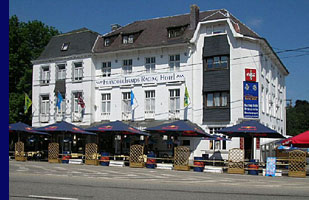 It
was roughly this time of year – late Spring or early
Summer in the Ardennes – some eighty-eight years ago.
The mountains were a deep, rich green, flushed by the fresh
new growth of thousands of pine trees. A light mist drifted
through the valleys, and two men were having breakfast in
what was then called the Hotel des Bruyeres. Known today,
somewhat prosaically, as the Francorchamps Racing Hotel,
the building stood at the heart of the village of Francorchamps,
alongside the main road to the famous town of Spa. One of
the men was Jules de Thier, a newspaper proprietor, and
the other was Henri Langlois van Ophem, a senior member
of the Royal Automobile Club of Belgium. Between them they
were hatching a plan for an ambitious new motor racing circuit.
It
was roughly this time of year – late Spring or early
Summer in the Ardennes – some eighty-eight years ago.
The mountains were a deep, rich green, flushed by the fresh
new growth of thousands of pine trees. A light mist drifted
through the valleys, and two men were having breakfast in
what was then called the Hotel des Bruyeres. Known today,
somewhat prosaically, as the Francorchamps Racing Hotel,
the building stood at the heart of the village of Francorchamps,
alongside the main road to the famous town of Spa. One of
the men was Jules de Thier, a newspaper proprietor, and
the other was Henri Langlois van Ophem, a senior member
of the Royal Automobile Club of Belgium. Between them they
were hatching a plan for an ambitious new motor racing circuit.
It
was a time when all the world’s most successful circuits
still followed public roads, and the route under discussion
had the advantage of several very long straights, some challenging
high-speed corners, and spectacular scenery. It was also
within an area that had long demonstrated a ready enthusiasm
for the concept of motorsport, and short-course road races
and concours d’elegance had been staged in
Spa as early as 1896. The first city-to-city race, between
Spa and Brussels, had followed in 1898, and had given rise
to the Circuit des Ardennes – a mammoth 53
mile round trip between the towns of Bastogne, Longlier
and Habay-la-Neuve. The closest any of these had come to
Francorchamps was a race in 1907, which ran between Spa
and Luxembourg, and finished at Malchamps, just north of
the current circuit. Now, in 1920, de Their and van Ophem
were proposing a new 15 kilometre, 9.3 mile circuit that
would link the three communities of Malmedy, Stavelot and
Francorchamps.
 The
first event was scheduled for the following year, but things
didn’t get off to a very auspicious beginning. There
were so few entries that the inaugural car race was cancelled,
but a motorcycle race went ahead as planned, and this proved
sufficiently successful that the first car race was re-arranged
for 1922.
The
first event was scheduled for the following year, but things
didn’t get off to a very auspicious beginning. There
were so few entries that the inaugural car race was cancelled,
but a motorcycle race went ahead as planned, and this proved
sufficiently successful that the first car race was re-arranged
for 1922.
The
route was a triumph. A year after the Le Mans 24 Hours was
first run, the Spa 24 Hours was introduced, and the Belgian
Grand Prix followed in 1925. Even by the standards of the
day, Francorchamps was a fast circuit, and it was soon to
get faster still. The tortuous Virage de l’Ancienne
Douane that had once straddled the national border
and now curled through the valley just south of La Source
was bypassed in 1939 by a new, faster and more challenging
series of left-right-left bends. Called Eau Rouge
after the rusty colour of the streamwater that trickled
through the valley, a legend was created, and with it the
future of the Francorchamps circuit was assured.
For
more than fifty years the circuit remained largely unaltered,
and some eighteen Grand Prix were held there between 1925
and 1970. (Click on the map for an enlargement.) In addition
to the daunting prospect of Eau Rouge, the route
also included the notorious Masta Kink –
a blisteringly quick left-right chicane situated in the
middle of two of the fastest straights in motorsport. It
took nerves of steel to get it right, and an error either
way could send the unwary into stone walls or the sides
of houses. It was this, combined with an accident involving
Jackie Stewart in 1966 (which saw him end up in the cellar
of one of those houses) that led to a boycott of the Francorchamps
circuit by Formula 1 in 1970.
This
was a serious loss to the track’s prestige, and for
some years the Belgian Grand Prix alternated between the
circuits at Zolder and Nivelles, but in 1979 the revised
Spa-Francorchamps circuit was unveiled. Halved in length
to just 7 kilometres, the new circuit was purpose-built
for racing. Several sections still followed public roads
when the track wasn’t in use, including Eau Rouge
and the run up to Les Combes, but the new stretch
from there to Stavelo was out-and-out racetrack.
Formula 1 returned in 1983, and apart from three years,
the Belgian Grand Prix has been staged at Spa ever since.
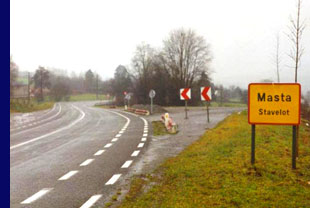 The
route of the old circuit can still be traced, although the
Masta Kink is much altered – it was even
considered too dangerous for road use! (see photo right
by Mattijs Diepraam ) The lap record for the 14 kilometre
route was set by Henri Pescarolo in an F1 Matra at an average
speed of 160 miles an hour (262 kph) and will never be beaten.
The
route of the old circuit can still be traced, although the
Masta Kink is much altered – it was even
considered too dangerous for road use! (see photo right
by Mattijs Diepraam ) The lap record for the 14 kilometre
route was set by Henri Pescarolo in an F1 Matra at an average
speed of 160 miles an hour (262 kph) and will never be beaten.
There
have been some minor adjustments to the new circuit since
1979, with a subtle re-profiling of Eau Rouge in
2002 that some drivers suggest now makes the corner too
easy, but most still find sufficiently awesome none the
less. The famous Bus Stop, first introduced in
1981 to placate Formula 1, was altered in 2004, and the
replaced completely in 2007, and the hairpin at La Source
was resurfaced and given extended run-off at the same time.
This is clearly visible from the aerial shot below, one
of a series added recently to the official circuit
website.
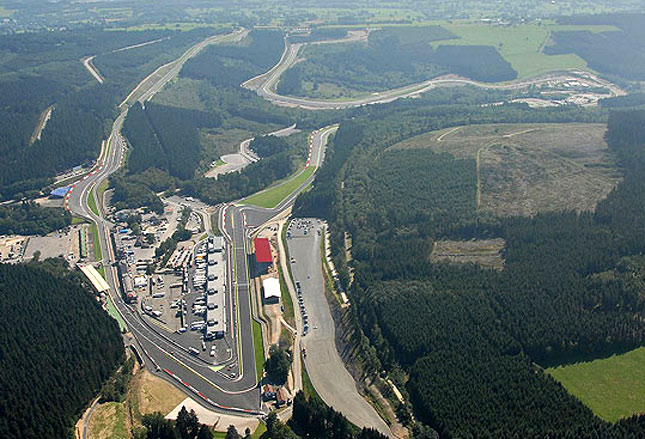
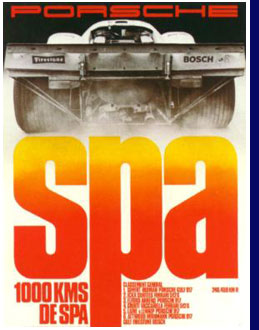 Although
well known as home to the Belgian Grand Prix, Spa-Francorchamps
has long been associated with endurance racing and sportscars.
The Spa 24 Hours is only a year younger than the Le Mans
24 Hours, but events over shorter distances were a regular
feature of the calendar from the 1930s onwards. The annual
500 kms was incorporated into the World Sportscar Championship
from 1963, and then was lengthened to 1000 kilometres from
1966, matching the 1000 kilometre races staged at the Nurburgring
and at Monza. The poster, left, is from the 1970
event.
Although
well known as home to the Belgian Grand Prix, Spa-Francorchamps
has long been associated with endurance racing and sportscars.
The Spa 24 Hours is only a year younger than the Le Mans
24 Hours, but events over shorter distances were a regular
feature of the calendar from the 1930s onwards. The annual
500 kms was incorporated into the World Sportscar Championship
from 1963, and then was lengthened to 1000 kilometres from
1966, matching the 1000 kilometre races staged at the Nurburgring
and at Monza. The poster, left, is from the 1970
event.
The
Spa race was shortened, and then dropped – once again
for safety reasons - from 1975 onwards, but resumed in 1982
following the opening of the new circuit. With the decline
of the WSC, the Spa 1000 kms disappeared again after 1990,
but was resurrected in 2003 as one of the headline events
of the Le Mans Endurance Series.
The
LMES, and subsequently the Le Mans Series, has always been
envisaged as representing a return to the true heritage
of endurance motorsport. Everything about the series is
intended to embody the best of sportscar and GT racing,
with big grids, top manufacturers, the most talented drivers
and, of course, the best circuits. All races are run over
1000 kilometres or six hours, and the three circuits most
deeply associated with the history of 1000 kilometre events
form the core of the series’ calendar. To those have
been added races in the UK – at Silverstone and Donington
Park, and in Spain – at Barcelona, Valencia and Jarama.
Attempts to introduce races elsewhere, such as Turkey and
Brazil, have so far proved less popular, but the highlight
of the year remains, in many eyes, the 1000 Kilometres at
Spa-Francorchamps.
In
2007 Mike Newton and Thomas Erdos drove the RML AD Group’s
MG Lola EX264 to an historic third place overall at Spa.
It was the first time that a second-category entry had finished
on the overall podium in Europe. Much has changed in the
12 months since then, and while Mike and Tommy now have
a revised version of the MG, designated the EX265, they
also face far stiffer opposition from a whole raft of new
entries. Not just new cars, in the form of the Porsche RS
Spyder and the Embassy WF01 Zytek, but also new teams and
very professional driver line-ups.
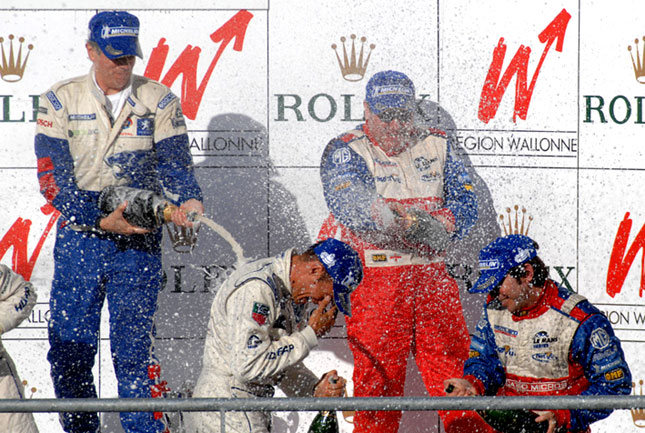
While
a repeat of their 2007 performance is not impossible, the
chances are far slimmer. Good runs in the first two rounds
of the 2008 championship have netted RML’s drivers
a brace of fourth-position finishes and a good points tally.
The result in Monza last time out was purely on merit, but
to run faultlessly from lights to flag and still only secure
fourth does suggest that it may take an exceptional race
from the RML-prepared machine to do better – either
that or misfortune for the team’s rivals. The new
XP-21 engine has yet to reveal its full potential, although
the much-developed MG chassis has already demonstrated phenomenal
road-holding and handling – vital for the Spa circuit.
First practice on Friday will be the first chance to see
what this year’s Spa 1000 Kilometres holds in store
for RML.
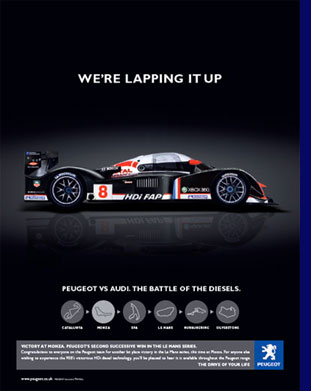 In
LMP1, of course, it will be a straight shoot-out between
Peugeot and Audi. The gutsy diesel powered prototypes will
relish the Spa inclines and high-speed corners, although
the Lola Aston Martin has demonstrated an ability to set
fast times.
In
LMP1, of course, it will be a straight shoot-out between
Peugeot and Audi. The gutsy diesel powered prototypes will
relish the Spa inclines and high-speed corners, although
the Lola Aston Martin has demonstrated an ability to set
fast times.
The
coupé aside, Audi has a serious point to prove, and
with Peugeot crowing in the national press about the two-nil
scoreline so far this season, expect the R10s to be resolute
as they race so close to home. It should be, as always,
a fascinating battle. A race at Spa could be nothing else.
Once
again, the race will be broadcast live by Radio Le Mans
- click the link below - and TV coverage will be live on
Motors TV:
Motors
TV
Sun 11:05 - 14:00 - Preview/start of the Spa 1000 kms
Sun 15:00 - Live coverage through to the finish.
Tues 13:05 & 18:55 - Highlights
Thurs 15:05 & 17:10 - Highlights
|
Live
radio coverage from John Hindhaugh, Graham Tyler,
Graham Goodwin and others. |
